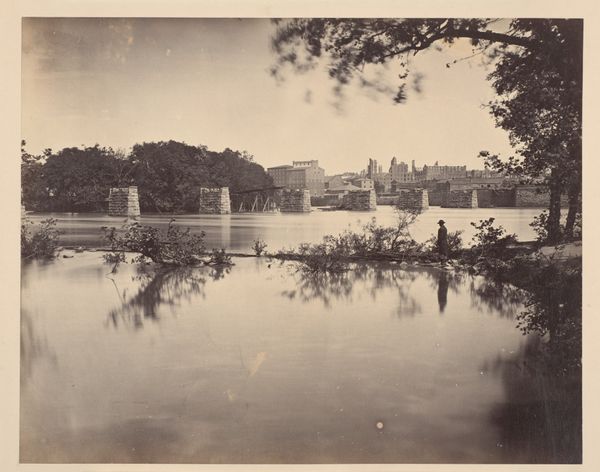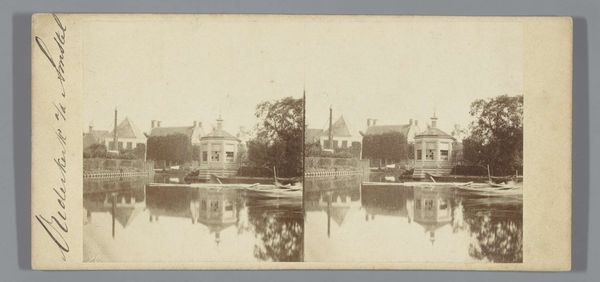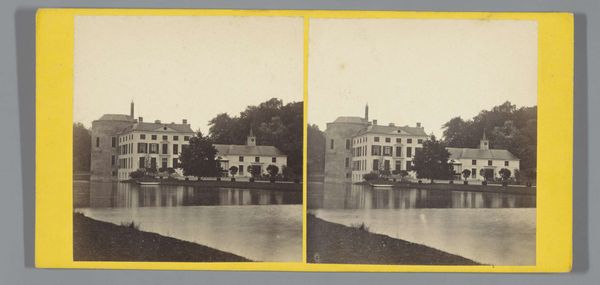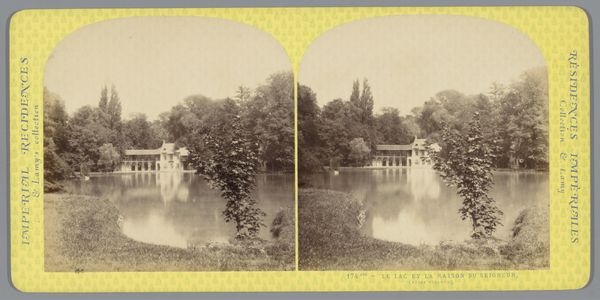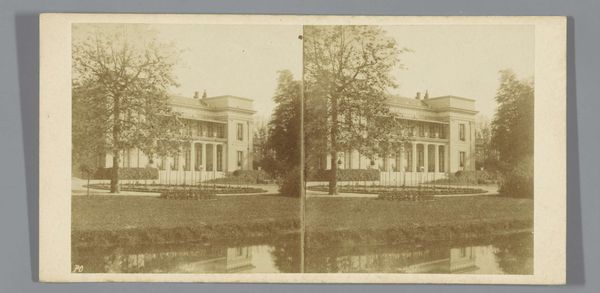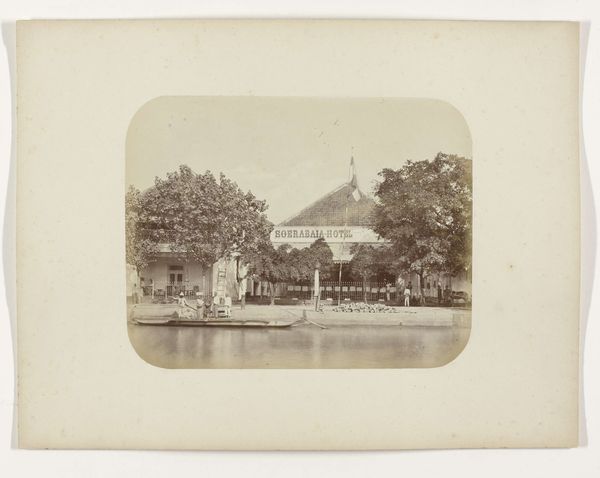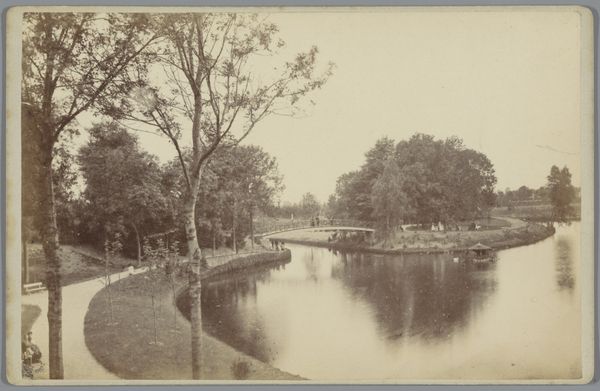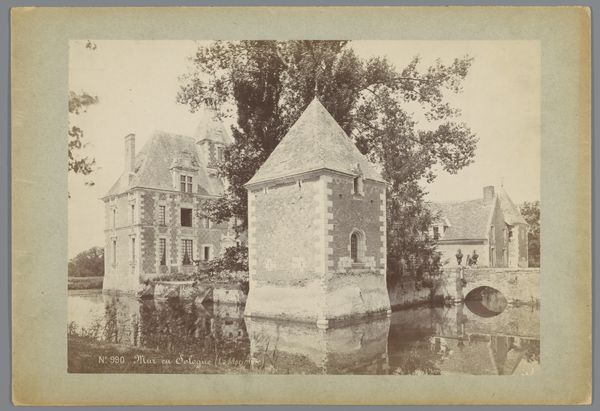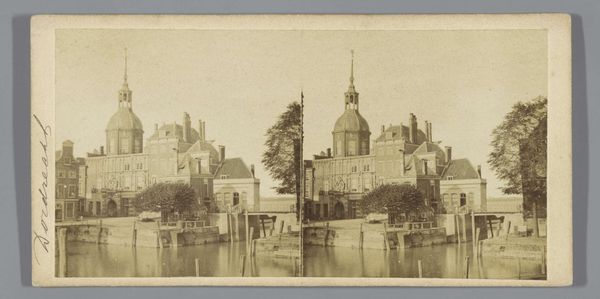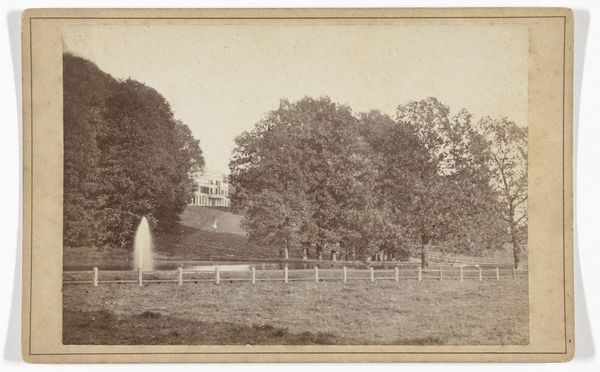
Hofvijver in Den Haag, gezien vanaf de Lange Vijverberg 1859 - 1865
0:00
0:00
#
aged paper
#
light pencil work
#
homemade paper
#
paper non-digital material
#
light coloured
#
coloured pencil
#
watercolour bleed
#
watercolour illustration
#
paper medium
#
watercolor
Dimensions: height 84 mm, width 175 mm
Copyright: Rijks Museum: Open Domain
Editor: This is "Hofvijver in Den Haag, gezien vanaf de Lange Vijverberg" by Pieter Oosterhuis, created sometime between 1859 and 1865. It appears to be a mounted photograph with beautiful tonal qualities. What stands out to me is the paper itself - it seems quite aged. What's your read on this piece? Curator: Let’s consider the materiality. Notice the signs of "aged paper," even "homemade paper," suggesting a specific social and economic context. The very creation of photographic paper at this time involved artisanal labor. Do you see any significance in Oosterhuis' choice of these materials? Editor: I suppose the use of non-digital materials links it more closely to traditional artistic practices of the time. Does that challenge the industrial rise in the period? Curator: Precisely! It invites us to think about photography not just as a technological marvel, but as a crafted object, imbricated in social relations of production and consumption. The use of light-colored paper and the evidence of watercolor bleed point towards a process where control wasn't absolute. How does this "homemade" feel affect our understanding of the scene depicted? Editor: It feels less like a precise document and more like a carefully considered impression, more artistic I guess. Knowing about the production adds another layer. I hadn't really considered photography that way before. Curator: Exactly! By focusing on process, material, and technique, we reveal photography's deep ties to broader material culture. What seems like a straightforward landscape view is, in fact, loaded with information about labor, value, and artistic intention. Editor: Thanks, I see it differently now. The "how" is as important as the "what."
Comments
No comments
Be the first to comment and join the conversation on the ultimate creative platform.

